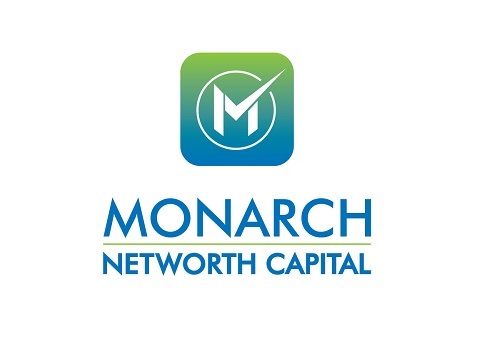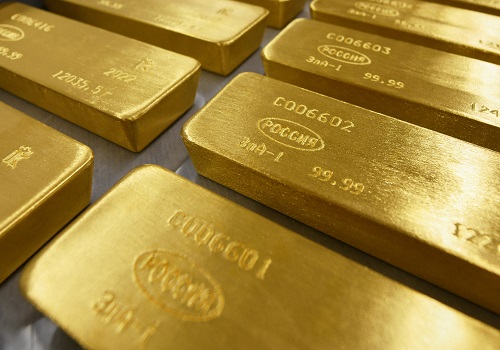Gold trading range for the day is 76110-78490 - Kedia Advisory

Gold prices gained 1.13% to settle at Rs.77,486, driven by the People's Bank of China (PBOC) resuming gold purchases in November after a six-month pause. The central bank's renewed buying could boost investor sentiment, alongside expectations of a 25-basis-point rate cut at the U.S. Federal Reserve's meeting next week. The CME Group's FedWatch Tool shows an 87% probability of a rate cut, up significantly from last week's 61.6%.Physical gold demand showed mixed trends globally. In India, a weaker rupee increased prices, pushing dealers to offer discounts of up to $2 per ounce compared to last week’s $3 premium. China's seasonally slow demand saw discounts narrowing to $11-$15 per ounce, down from $19-$21 last week. Central banks continued robust gold purchases, recording 60 tons of net buying in October, the highest monthly figure in 2024. India led with 27 tons added during October, bringing its year-to-date total to 77 tons, a five-fold increase from 2023. Turkey and Poland also contributed significantly with year-to-date additions of 72 tons and 69 tons, respectively. The World Gold Council (WGC) highlighted strong investment activity offsetting weaker jewellery demand, with global gold demand excluding OTC trading steady year-on-year at 1,176.5 metric tons in Q3 2024. Technically, gold is under fresh buying with open interest rising 6.08% to 13,175 contracts. Support is seen at Rs.76,800, with further downside testing Rs.76,110. Resistance is pegged at Rs.77,990, with potential gains toward Rs.78,490 on a breakout.
Trading Ideas:
* Gold trading range for the day is 76110-78490.
* Gold prices climbed as China's central bank resumed gold purchases after a six-month pause
* While expectations for an interest rate cut at the Federal Reserve's meeting next week strengthened.
* This week, investors will focus on the U.S. Consumer Price Index (CPI), due Wednesday, followed by the Producer Price Index (PPI) on Thursday.
Silver
Silver prices climbed 2.97% to settle at Rs.95,197 as investors anticipated U.S. inflation data that could reinforce expectations of a Federal Reserve interest rate cut later this month. Additionally, China’s pledge to adopt more proactive measures to stimulate its economy boosted sentiment, as the country is a major consumer of raw commodities, including silver. The global silver market remains in a structural deficit for the fourth consecutive year, projected at 182 million ounces in 2024, driven by record industrial demand and a recovery in jewellery consumption. Demand is forecast to reach 1.21 billion ounces in 2024, despite a 16% dip in physical investment. Supply growth of 2%, led by higher production in Mexico, Chile, and the U.S., alongside a 5% increase in recycling, will not fully meet demand. Exchange-traded products (ETPs) are expected to witness annual inflows for the first time in three years, reflecting investor confidence in silver’s outlook. India’s silver imports surged to 4,554 tons in the first half of 2024, a sharp rise from 560 tons in the same period last year, as industrial buyers stockpile to hedge against price volatility. This trend underscores rising demand from solar panel and electronics manufacturers, reinforcing silver's appeal amid depleted inventories and high global prices. Technically, silver is under short covering with open interest declining by 3.21% to 23,959 contracts as prices rose Rs.2,749. Support is placed at Rs.92,820, with further downside testing possible at Rs.90,435. Resistance is now pegged at Rs.96,750, with potential gains up to Rs. 98,295 on a breakout.
Trading Ideas:
* Silver trading range for the day is 90435-98295.
* Silver gained as investors looked ahead to key US inflation
* China said it plans to be “more proactive” in stimulating its listing economy.
* Fed's Hammack says time to slow rate cuts may have arrived
Crude oil
Crude oil prices rose by 1.73% to settle at Rs.5,825, supported by escalating geopolitical risks in the Middle East after rebels ousted Syrian President Bashar al-Assad. This development heightened concerns over regional instability, potentially disrupting oil supplies. Adding to the momentum, U.S. crude oil inventories saw a significant drop of 5.073 million barrels, the most in five months and far exceeding market expectations of a 1-million-barrel draw. On the pricing front, Saudi Aramco slashed its January 2025 oil prices for Asian buyers to the lowest levels since 2021, reflecting weak demand from top importer China. Prices were also reduced for Europe and the Mediterranean, while North American prices remained unchanged. Meanwhile, OPEC+ delayed planned output increases to April and extended the unwinding of production cuts to 2026, signaling a cautious approach to managing market balances. Demand forecasts from the U.S. Energy Information Administration (EIA) painted a subdued outlook. Global oil demand growth for 2025 was revised downward by 300,000 bpd to 104.3 million bpd, while U.S. demand projections fell marginally to 20.5 million bpd. U.S. production forecasts were also lowered, with output expected to average 13.54 million bpd in 2025, a 1% reduction from prior estimates. Technically, crude oil saw short covering as open interest dropped by 39.55% to 8,329 contracts while prices rose Rs.99. Key support levels are at Rs.5,743, with further downside testing possible at Rs.5,660. Resistance stands at Rs.5,879, with potential gains up to Rs.5,932 on a breakout.
Trading Ideas:
* Crudeoil trading range for the day is 5660-5932.
* Crude oil rose supported by rising geopolitical tensions in the Middle East following the fall of Syria’s government.
* Saudi Aramco, has reduced its January 2025 prices for Asian buyers to the lowest since early 2021.
* OPEC+ delayed planned output increases by three months until April and extended the full unwinding of cuts to the end of 2026.
Natural gas
Natural gas prices surged 3.63% to settle at Rs.271.5, driven by expectations of stronger-than-anticipated demand despite warmer-than-normal weather forecasts reducing heating needs. Increased feedgas volumes to LNG export plants, averaging 14.2 billion cubic feet per day (bcfd) in early December compared to 13.6 bcfd in November, have supported demand. This comes as production in the Lower 48 states rose to 102.3 bcfd in December, up from 101.5 bcfd in November. On the supply side, U.S. natural gas inventories stand at 3,937 billion cubic feet, following a withdrawal of 30 billion cubic feet in the last reported week. This draw was smaller than market expectations of 43 billion cubic feet, leaving stocks 7.8% above the five-year average and 4.9% higher than the same period last year. Despite higher-than-average inventories, colder temperatures and reduced production due to lower prices have fueled recent withdrawals. The U.S. entered the winter heating season with the highest storage levels since 2016, reflecting robust injections late in the injection season. Technically, the market witnessed short covering as open interest dropped by 21.15% to 15,141 contracts while prices rose Rs.9.5. Natural gas finds immediate support at Rs.266.2, with further downside likely to test Rs.261. Resistance is pegged at Rs.276.2, and a move above this level could drive prices toward Rs.281.
Trading Ideas:
* Naturalgas trading range for the day is 261-281.
* Natural gas climbed as demand is now expected to remain stronger than previously anticipated.
* While warmer-than-normal weather forecasts suggest reduced heating needs, this impact may be offset by higher feedgas volumes to LNG export plants.
* December production in the Lower 48 states rose to 102.3 bcfd, up from 101.5 bcfd in November.
Copper
Copper prices rose 1.13% to settle at Rs.831.05, driven by optimism over large-scale economic support from China. The Politburo announced plans for a “moderately loose” monetary policy and a “more proactive” fiscal stance for 2025, bolstering expectations for stronger manufacturing activity in the world’s largest copper consumer. Expansionary manufacturing PMIs and increased unwrought copper imports, up 1.1% year-on-year in October, further underscored improving demand. For the first ten months of 2024, unwrought copper imports rose 2.4% to 4.6 million tons. Supply-side concerns also supported prices. The global refined copper market showed a deficit of 131,000 metric tons in September, reversing from a surplus in August, according to the ICSG. Inventories on the Shanghai Futures Exchange dropped another 10% last week, bringing the total decline since June to 71%. Meanwhile, copper concentrate processing fees for 2025 were significantly reduced, reflecting tight supply in the spot market. Technically, the market experienced short covering, with open interest declining by 6.49% to 5,920 contracts while prices increased by Rs.9.3. Copper is finding support at Rs.821.6, with a potential test of Rs.812.1 if breached. On the upside, resistance is likely at Rs.837.1, and a move beyond this could push prices to Rs.843.1.
Trading Ideas:
* Copper trading range for the day is 812.1-843.1.
* Copper jumped after signals of large-scale economic support from China raised the outlook of manufacturing demand.
* The Politburo announced that China will take a “moderately loose” stance on monetary policy and a “more proactive” stance to fiscal stimulus next year.
* Some optimism for Chinese manufacturing was already noted by expansionary PMIs according to November prints.
Zinc
Zinc prices rose by 1.98% to settle at Rs.291.7, driven by optimism after China announced additional measures to stimulate its sluggish economy. Smelter production in December 2024 is expected to increase by over 20,000 metric tons month-on-month (MoM), or 5%, as higher-than-expected output from regions such as Qinghai, Inner Mongolia, and Shaanxi offset reductions in other areas. Despite this recovery, cumulative domestic refined zinc production for 2024 is down by over 6% year-on-year (YoY). Global market dynamics further supported prices. According to the ILZSG, the global zinc market deficit slightly narrowed to 79,500 metric tons in September from 85,000 tons in August. For the first nine months of 2024, the market recorded a deficit of 8,000 tons, contrasting sharply with the surplus of 358,000 tons during the same period last year. Additionally, China’s refined zinc production rose by 2% MoM in September, surpassing expectations, although it was still down 8% YoY. Recovery from maintenance in smelters across several provinces, coupled with easing raw material shortages, contributed to the improved output. Technically, the zinc market saw fresh buying, with open interest increasing by 30.97% to 3,671 contracts as prices gained Rs.5.65. Support for zinc is at Rs.287.3, with further downside potential to Rs.282.7 if breached. Resistance is anticipated at Rs.294.5, and a breakout could see prices testing Rs.297.1.
Trading Ideas:
* Zinc trading range for the day is 282.7-297.1.
* Zinc gained after China said it would take more action to boost its lethargic economy.
* In December 2024, domestic refined zinc production will increase by over 20,000 mt MoM or about 5% MoM
* The global zinc market deficit edged down to 79,500 metric tons in September from 85,000 tons in August
Aluminium
Aluminium prices rose marginally by 0.16% to settle at Rs.243.7, supported by optimism surrounding China’s economic recovery plans. The Politburo announced a significant shift to “moderately loose” monetary policy and “more proactive” fiscal measures, fueling hopes of sustained GDP growth at 5% into the next year. This bolstered sentiment for stronger domestic demand, outweighing concerns over tariff threats from US President-elect Trump. China’s aluminium exports surged by 17% year-on-year (YoY) to nearly 5.5 million tons in the first ten months of 2024, with October exports alone rising 31% YoY to 577,000 tons, signaling robust external demand. China’s aluminium production increased 4.3% YoY in the first ten months to 36.39 million tons, with October output rising 1.6% YoY to 3.72 million tons. Key regions like Shandong, Xinjiang, and Inner Mongolia maintained high operating rates. However, rising alumina costs and maintenance activities, particularly in Guangxi, Sichuan, and Chongqing, capped capacity expansion. Despite this, ramp-ups in new capacities are expected to drive production higher in December. Technically, the aluminium market saw fresh buying interest, with open interest increasing by 5.61% to 3,447 contracts. Support levels for aluminium are at Rs.242.4, with further downside to Rs.241.1 if breached. Resistance is anticipated at Rs.245.1, and a breakout could drive prices to Rs.246.5.
Trading Ideas:
* Aluminium trading range for the day is 241.1-246.5.
* Aluminium gains as large pledges of economic support from the Chinese government raised bets that the economy may recover.
* The Politburo announced it will shift to a “moderately loose” monetary policy stance next year from the “prudential” stance.
* China’s aluminum production increased by 2.74% YoY
Cottoncandy
Cottoncandy prices fell by 0.68% to settle at Rs.55,280, pressured by weaker export data. The USDA reported a 47% decline in weekly export sales of upland cotton, reflecting subdued global demand. In contrast, domestic cotton yarn prices in South India have risen due to stronger garment industry demand and robust export orders. India’s cotton production for the 2024/25 season is projected to decline by 7.4% year-on-year to 30.2 million bales, primarily due to reduced acreage and crop damage caused by excessive rainfall. The USDA revised India's production estimate to 30.72 million bales while lowering ending stocks to 12.38 million bales. India’s cotton imports are expected to rise to 2.5 million bales in 2024/25, up from 1.75 million bales a year ago, while exports may fall to 1.8 million bales, compared to 2.85 million bales in 2023/24. The reduction in acreage, particularly in Gujarat, and competition from groundnuts with better returns have significantly impacted production. Globally, cotton production is expected to rise, with increases in China, Brazil, and Argentina offsetting reductions in the U.S. and Spain. The USDA lowered U.S. cotton production to 14.2 million bales due to Hurricane Helene, with exports also reduced to 11.5 million bales. Technically, the market experienced fresh selling as open interest increased by 3.13% to 297 contracts. Cottoncandy is supported at Rs.55,260, with a potential test of Rs.55,230 if it breaks below. Resistance is seen at Rs.55,310, and a move above could lead to testing Rs.55,330.
Trading Ideas:
* Cottoncandy trading range for the day is 55230-55330.
* Cotton dropped as USDA’ weekly export sales were down 47% from the previous week.
* India's cotton production in 2024/25 is likely to fall by 7.4% from a year ago
* Cotton production is projected to increase in China, Brazil, and Argentina, more than offsetting reductions in the US and Spain – USDA
* In Rajkot, a major spot market, the price ended at 25740.05 Rupees dropped by -0.23 percent.
Turmeric
Turmeric futures fell by -1.99% to close at 13,906 due to reports of favorable crop conditions and increased sowing acreage. Turmeric arrivals rose to 9,030 bags from 7,965 bags in the previous session, with strong arrivals noted in major trading hubs like Erode and Hingoli. However, intermittent market closures in Hingoli due to assembly elections have disrupted trading activities. Improved acreage, particularly in regions like Maharashtra, Telangana, and Andhra Pradesh, has led to an estimated increase in turmeric sowing by 30-35% year-on-year, potentially raising the total sowing area to 3.75-4 lakh hectares. Despite favorable conditions, delayed harvesting due to prolonged vegetation from recent rains might impact the timeline of new crop arrivals. Turmeric exports for April-September 2024 rose marginally by 0.96% to 92,911.46 tonnes compared to the same period in 2023. However, exports in September dropped by 4.06% month-on-month to 15,326.76 tonnes, although they were 68.69% higher than in September 2023. Meanwhile, imports surged by 184.73% during the April-September period, with September imports increasing by 33.92% from August but dropping 28.46% compared to September 2023. Technically, turmeric witnessed fresh selling with open interest rising by 10.97% to 7,435 contracts, while prices fell by 282 points. Immediate support lies at 13,790, with further downside possible toward 13,672. On the upside, resistance is seen at 14,066, and a breakout above could test 14,224.
Trading Ideas:
* Turmeric trading range for the day is 13672-14224.
* Turmeric dropped as turmeric crop is reported to be in good to excellent condition.
* Turmeric arrivals rose to 9,030 bags from 7,965 bags in the previous session.
* Although crop acreage has improved, delay in harvesting due to prolonged rains may impact the timelines of fresh supplies.
* In Nizamabad, a major spot market, the price ended at 13769.85 Rupees dropped by -1.19 percent.
Jeera
Jeera prices increased by 1.22% to close at 24,130, driven by delayed sowing in key producing states like Gujarat and Rajasthan. High day temperatures have disrupted seeding and germination, with Gujarat reporting jeera sowing on only 57,915 hectares by November 25, compared to 2.44 lakh hectares during the same period last year. This accounts for merely 15% of the normal cropping area of 3.81 lakh hectares in Gujarat. A 20-25 day delay in sowing could reduce production further, with estimates suggesting a 10-15% decline in Rajasthan and an overall reduction of 10%.India's cumin production reached 8.6 lakh tonnes during 2023-24, up from 5.77 lakh tonnes the previous year. However, Indian cumin remains the cheapest globally at $3,050 per tonne, compared to Chinese cumin priced $200-$250 higher. This price competitiveness has made India the preferred supplier, especially amid Middle East tensions boosting export demand. Domestic and international demand has surged, with jeera exports for April-September 2024 rising by 70.02% year-on-year to 119,249.51 tonnes. Exports in September were up 24.64% month-on-month and an impressive 162.34% compared to September 2023. Technically, jeera saw fresh buying as open interest surged by 27.48% to 2,310 contracts, with prices gaining 290 points. Immediate support is at 23,960, and a fall below could test 23,770. Resistance is likely at 24,260, and a breakout above could lead to 24,370.
Trading Ideas:
* Jeera trading range for the day is 23770-24370.
* Jeera prices gained as sowing has been delayed.
* Higher day temperatures in the past few weeks has impacted the seeding of jeera and has also led to poor germination in various places.
* In Gujarat, jeera sowing has taken place in only 57,915 hectares till November 25 during the rabi 2024-25 cropping season.
* In Unjha, a major spot market, the price ended at 24432.85 Rupees dropped by -0.16 percent.
Views express by all participants are for information & academic purpose only. Kindly read disclaimer before referring below views
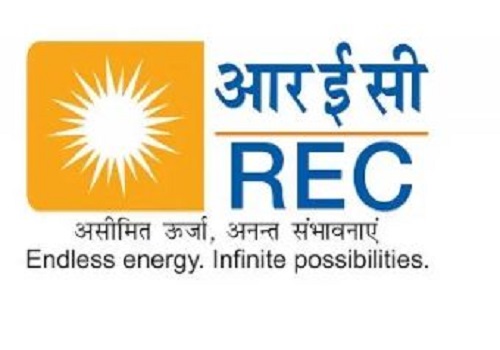

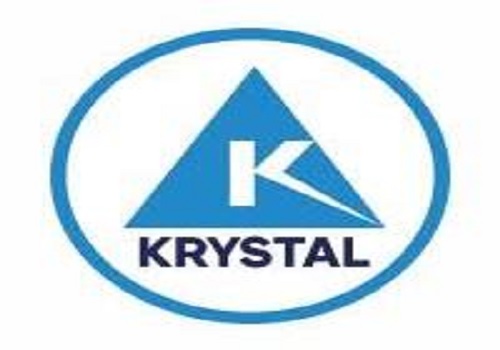





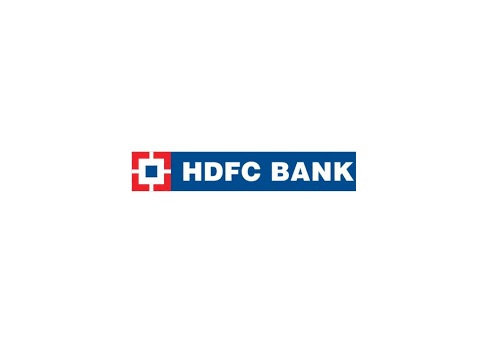

More News

Commodity Intraday Technical Outlook 25 January 2024 - Geojit Financial Services

